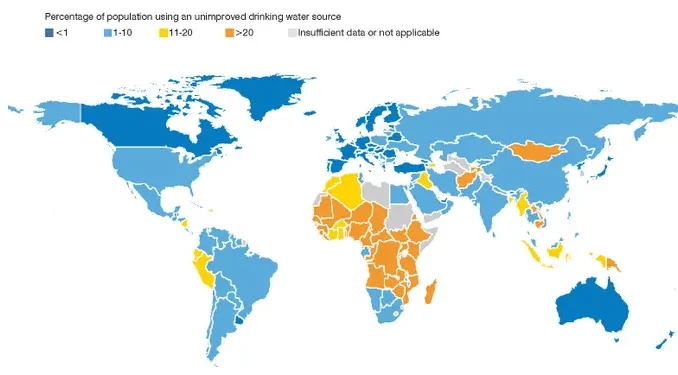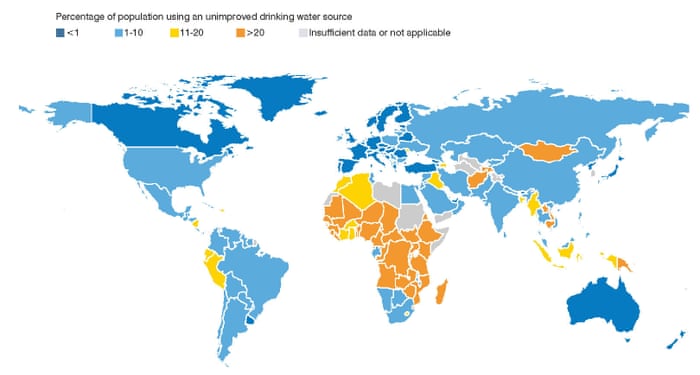
Drinking water
Water from an improved drinking water source that is available at home, available when needed, and free from fecal and chemical contamination is preferred. Many international organizations use access to safe drinking water and safely managed sanitation facilities as a measure of progress against poverty, disease, and death. The access of every man, woman, and child to these services is also considered a human right, not a privilege. Although progress has been made in providing safe and sanitary drinking water to people around the world, billions of people still do not have access to this service daily.
Difference between improved and unimproved drinking water source

Improved water sources should, but not always, provide safe drinking water and include:
- Domestic piped water connection
- General standpipe
- Borehole or tube well
- Well dug
- Spring protected
- Rainwater collection
- Packaged or delivered water
- Sources of unimproved drinking water are:
Challenges of access to clean water:
Lack of infrastructure:
Clean water and sewage infrastructure are insufficient or non-existent in many parts of the world.
Pollution:
Even where water sources exist, contamination from pollutants or natural sources can make water unsafe for drinking.
Poverty:
Those living in poverty often do not have the resources to access clean water sources or purchase water purification products.
Climate change:
Climate change can disrupt water supply through droughts, floods, and changes in rainfall patterns.
Global efforts to ensure access:
United Nations Sustainable Development Goal 6 (SDG 6):
The United Nations has recognized the importance of clean water and sanitation in its Sustainable Development Goals.
Non-Governmental Organizations (NGOs):
Various NGOs such as Water.org, Charity, Water, and UNICEF work to provide access to clean water and improve sanitation in vulnerable communities.
Government initiatives:
Many governments have taken initiatives to improve water infrastructure and water quality, especially in rural and deprived areas.
Conclusion
Access to safe and clean drinking water is a basic human right and the cornerstone of a healthy and productive society. While progress has been made, much work remains to be done to ensure everyone has access to safe and clean water sources. As individuals, communities, governments, and international organizations continue to work together, we can move closer to achieving clean water for all, improving the health, livelihoods, and overall well-being of people around the world. This is a challenge that requires global attention, commitment, and action.
Reference
https://www.cdc.gov/healthywater/global/assessing.html#:
https://www.google.com/search?q=Access+to+Clean+Water%3A&oq=
Leave a Reply